| Article ID | Journal | Published Year | Pages | File Type |
|---|---|---|---|---|
| 954840 | Social Science & Medicine | 2006 | 9 Pages |
As Charles Rosenberg [(2002). The tyranny of diagnosis. The Milbank Quarterly, 80, 237–260] has recently written, clinical diagnosis contributes to imposing structure on cultural reality in a manner which is not unproblematic. A social power resides in the process of naming diseases—one, which legitimises concerns, explains reality, naturalises deviance and imposes status. But clinical entities are not static, as both the concerns of society, and the technological ability of practitioners change (what Rosenberg refers to as the “iatrogenesis of nosology”), so too do the range of labels available for identifying disease.In this paper, I argue that being “overweight,” once predominantly an adjectival descriptor of corpulence, a physical sign or a symptom, and even, in some cultures, a sign of wealth and status, is undergoing the transformation to disease entity. I suggest that evidence of this is present in both the frequency and the way in which the term is being used by the media, the medical establishment and the laity. I argue that this change stems from the convergence of two particular phenomena. The first is the belief in the neutrality of quantification, and the objectivity that measurement brings to qualitative description. The second is the importance attributed to normative appearance in health. I discuss some of the implications of this evolution and its impact on health practices, including the exploitation of this purported disease state for commercial benefit.
